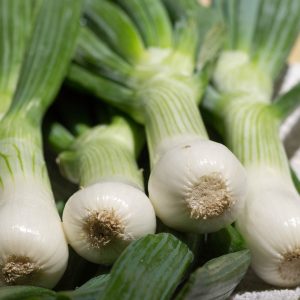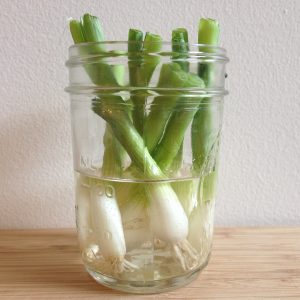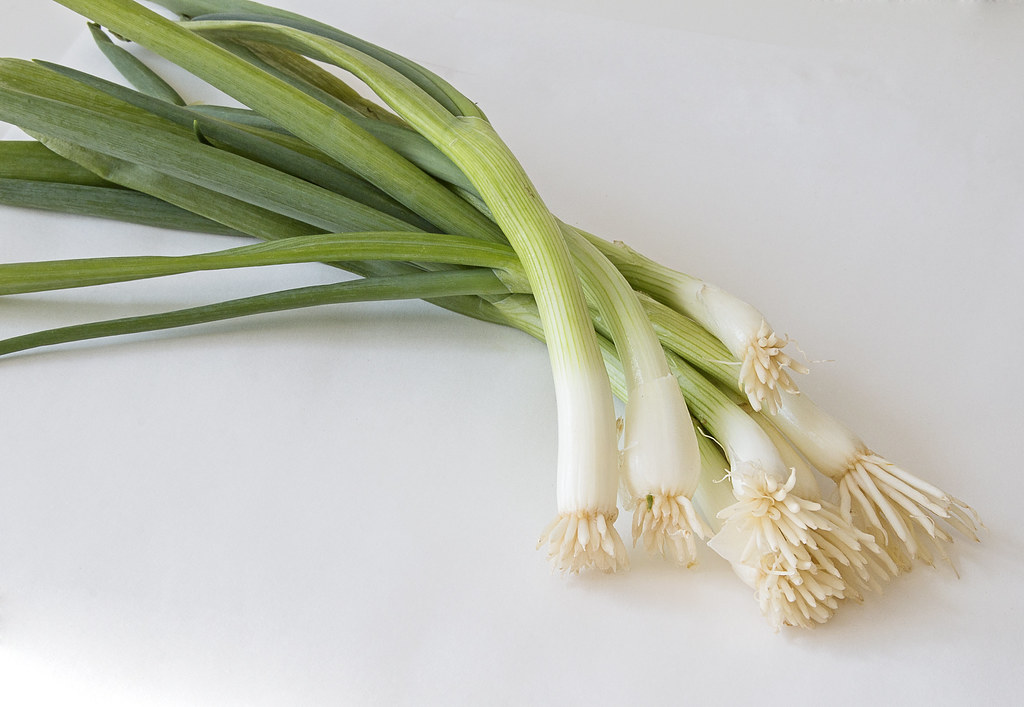
What Scallions Can Do for Your Health
Your grocer might label them as green onions. Scallions are an allium (Latin for “garlic”) vegetables. I use them as a suitable onion replacement. Their pungent relatives include onions, leeks, shallots, and chives. Cooks worldwide toss scallions into many Asian style dishes that needs a punch of flavor, but they aren’t limited to Asian style. The hollow, tube-like green tops have a mild, oniony zing, while the small, white bulb ends offer a sharper bite. In my opinion, they are pre-mature onions
Nutritional Values:
Scallions are mostly water, 1 cup is just 32 calories, only trace amounts of fat, and zero cholesterol. It also has less sugar and fewer carbs than vegetables like carrots, potatoes, and corn.
- About 16% of your daily requirement for folate, a vitamin your body needs to make DNA and which is especially important for women who are pregnant
- About 25% of your daily value for vitamin C, an antioxidant that helps protect your cells from damage
- Twice the daily recommended amount for adults for vitamin K, which helps your blood clot and keeps your bones strong.
- Iron — It plays a role in the formation of hemoglobin, cell growth and differentiation, metabolism, endocrine and brain function, energy production, and immune health.
- Potassium — This mineral balances the electrical and chemical processes in your body, which in turn helps maintain proper muscle contractions, transmit nerve impulses, regulate blood sugar levels and improve blood pressure, among

Health Benefits
Prevents infections. Extracts of onions, garlic, and their relatives have long been used medicinally. They can kill bacteria, fungi, and viruses. Lab tests on certain varieties of onions showed that at high enough concentrations, some can kill or slow the growth of salmonella or E. coli.
Helps in fighting cancer. Scallions and other allium vegetables block mainly stomach cancer growth. Researchers believe that a compound called allicin, which is what gives you garlic breath, may prevent cells from turning cancerous or slow tumors from spreading.
Protects your body. Vegetables in the onion group are packed with phytonutrients, including chemicals called antioxidants that defend your cells against damage. Antioxidants in onions like flavonoids and polyphenols hunt down free radicals, substances that can lead to cancer, inflammation, and age-related diseases. Fresh scallions are always best because antioxidants in vegetables lose their power during cooking.
Fiber. A cup of cut scallions has about 10% of the fiber you need for the whole day. Getting lots of fiber helps you feel full, keeps your cholesterol levels down, and may lower your chances for diabetes, heart disease, and other conditions.
Warning: Scallions are high in vitamin K, which works against blood-thinning medication. If you’re taking warfarin to prevent strokes, heart attacks, or blood clots, ask your doctor if green onions are safe for you. Always wash all fresh vegetables, including those that are sold prewashed and bagged. It’s rare, but people have been sickened or died of hepatitis after eating contaminated scallions.

Regeneration
When regrowing scallions you can use them to cook with and as a great home decoration. They grow about 3-4 inches + a week. Regrowing helps you #savemoney, #reducewaste, and wow the world. When doing a plant project with children I always use scallions since they grow so fast with low maintenance, and children have short attention spans, that need to see live results.
How to Use Scallions
You can find them practically anywhere. Wild scallions might be growing in your backyard. Your produce aisle likely stocks them year-round.
Here are some shopping tips:
- Pick scallions with crisp leaves and bright color.
- Trim the top and bottom tips and rinse with water. You can eat both green and white parts.
- Store scallions in the fridge for maximum freshness.

People often use green onions as a garnish on salads, soups, rice bowls or stews. But you can enjoy them in lots of other ways!
Grill them whole. Brush with olive oil, season with salt and pepper, and grill them for a couple of minutes for a sweet, charred flavor.
Puree them. Put cooked scallions in a blender and mix in eggs, flour, and a dash of soy sauce. They taste similar to scallion pancakes served at Chinese or Korean restaurants.
Buy Seeds